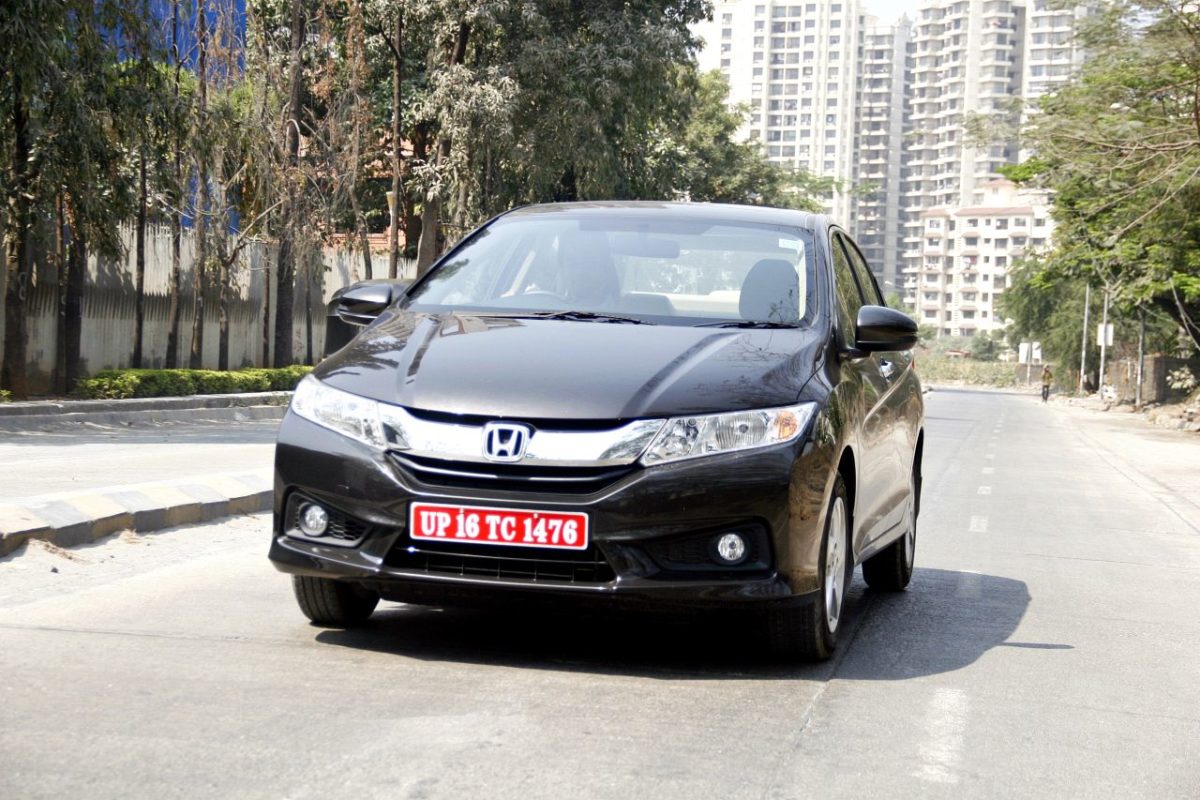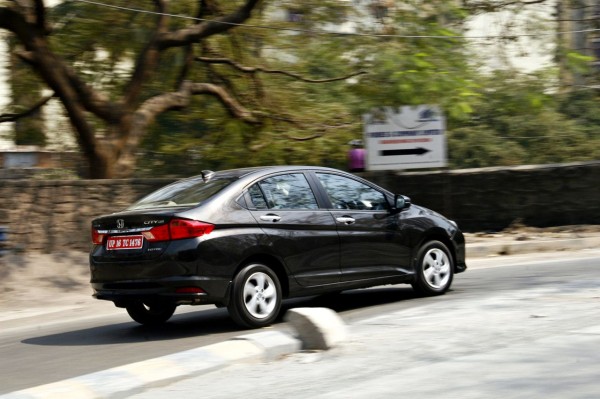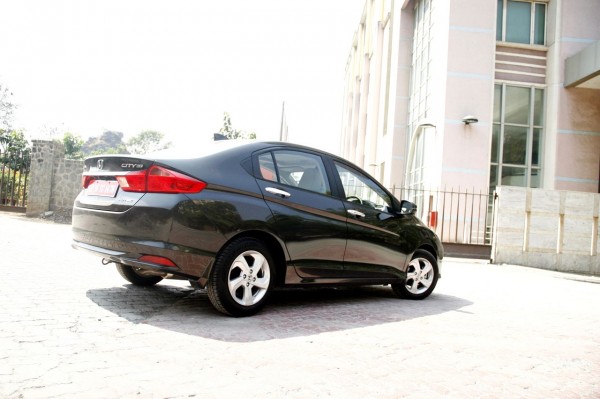Ride and Handling
At 165mm, the ground clearance of the new City isn’t quite enough to tackle the atrocities offered by Indian roads. The previous gen City was notorious for having a liking for getting its belly scraped at every taller than usual speed breaker, which our streets are littered with. The suspension however is on the stiffer side this time around, and that should prevent the body from lowering to an extent, even when loaded. A little more ground clearance would have been desirable though.
The most glaring oddity about the new Honda city, as mentioned is its set of skinny tyres, which don’t appear sufficient to provide a confident drive. While we still assert that a wider set of tyres would most definitely have benefitted the City’s grip levels and confidence on the limit, surprisingly, even with the slim tyres, it doesn’t feel nervous at speed. The stiffening and tuning of the suspension along with a sturdier frame have a big role to play in the better dynamic ability of the new car, as compared with the model it replaces. The ride is not as squishy as the previous version, which is a good thing once you gather speeds above 50kmph. At slower speeds, some stiffness translates into the cabin over sharper bumps.
Even with its relatively newfound prowess as regards handling, the new City isn’t exactly a driver’s delight. The tyres though good for a wide range of driving conditions tended to give way the moment we shifted to extreme mode. The City would take a series of bends without worry at a fairly swift pace, but the moment you gear up to attack the corners with a vengeance, the limitations of the tyres and suspension become evident. There is a fair bit of body roll, and the 175/65 R 15 rubber wouldn’t hold on for too long if pushed to the limit. The Skoda Rapid is still the benchmark for the segment when it comes to dynamic ability. However, for all practical purposes, the Honda City comes as a hugely improved ride and handling package.
Next page for Conclusion and Prices>>>



